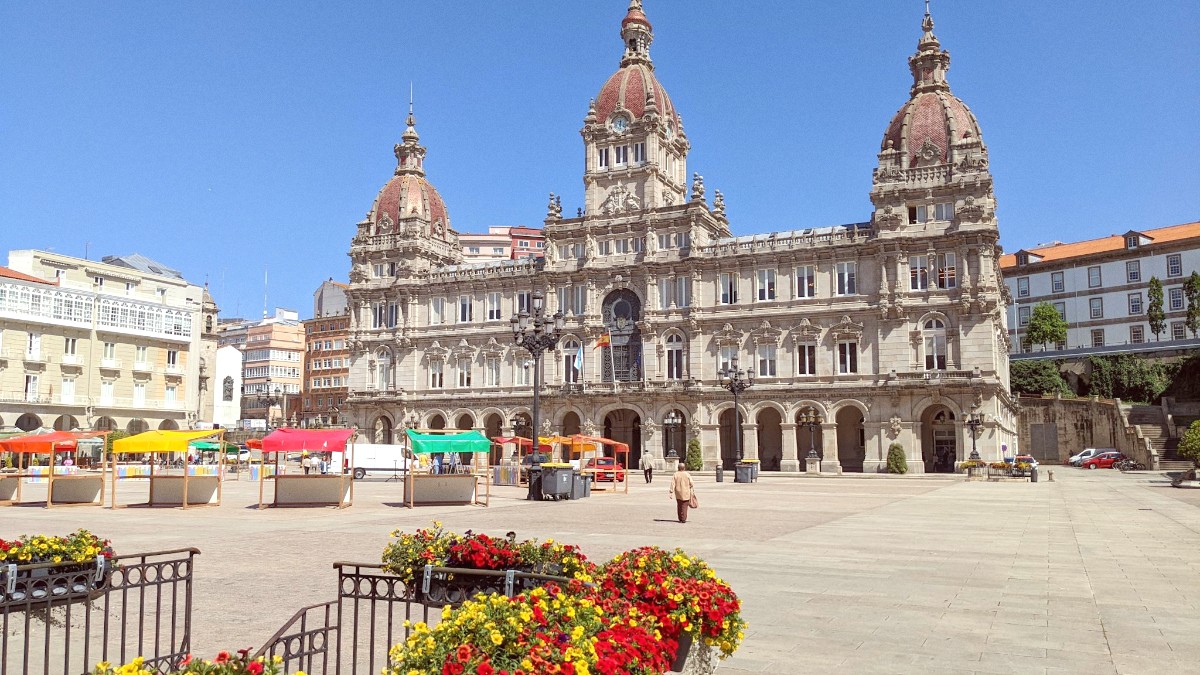
Cantabria Asturias And Galicia, Spain
The strong Atlantic influence presents an abundance of fresh fish and shellfish. This "cocina de producto" (product-focused cuisine) values the quality of raw ingredients above all.
Popular items include seafood (prawns, mussels, clams, scallops, crab, barnacles, octopus), fish (hake, cod, turbot, sardines), and Galician beef. Common vegetables are potatoes, turnip greens, and Padrón peppers. Tetilla and Arzúa-Ulloa cheeses are local. Flavors are often simple, using olive oil, garlic, paprika, and sea salt.
Lunch is the main meal (14:00-16:00). Dinner happens later (from 20:30 or 21:00 onwards). Many restaurants do not open for dinner before 20:00.
Eating tapas (small dishes) or raciones (larger portions) is a social activity. Going "de tapas" (tapas hopping) is common, moving from bar to bar to try specialties.
Bread usually accompanies meals and often incurs a separate charge. Coffee is enjoyed throughout the day ("Café con leche" is popular). Wine (Albariño or Ribeiro), beer, and cider are common beverages.
Boiled octopus, sliced and served on a wooden plate with boiled potatoes, coarse salt, sweet paprika, and olive oil.
Find it in almost any traditional Galician restaurant or "Pulpeira."
A savory pie with a flaky crust, often filled with tuna, cod, pork, or various seafood. It provides a convenient and satisfying meal.
Available in bakeries, cafes, and restaurants.
A platter of assorted fresh Galician seafood (crab, prawns, clams, barnacles, etc.). Often steamed or simply boiled to highlight natural flavor.
Best enjoyed at seafood restaurants along the port or beaches.
Albariño (Galicia's famous crisp white wine), Ribeiro (another excellent white), Orujo (a spirit similar to grappa, often a digestif, varieties include coffee and cream liqueurs). Some local cider is also produced.
Tarta de Santiago (almond cake with St. James cross stencil). Filloas (thin crêpe-like pancakes). Queso Tetilla (mild cow's milk cheese, often with quince paste). Sardinas Asadas (grilled sardines, popular around San Juan in June). Roasted chestnuts in autumn.
La Coruñan includes high-end restaurants, some with Michelin stars or recommendations. They focus on innovative Galician cuisine or fresh seafood. Reservations are recommended.
Numerous mid-range restaurants throughout the city offer Galician and Spanish dishes, often with excellent "Menu del Día" for good value. Budget eateries and street food options are plentiful.
Markets offer fresh produce and prepared foods, allowing you to eat where the produce is sold. International cuisine is also available.
Vegetarian options are becoming more common. Look for dishes like Pimientos de Padrón, tortilla de patatas, patatas bravas, or salads. Dedicated vegetarian/vegan restaurants are increasing.
Many restaurants can adapt dishes if you ask.
"Sin gluten" (gluten-free) awareness grows. Inform staff of allergies: "Soy alérgico/an a [allergen]" or "Soy celíaco/a."
A Spanish allergy translation card is helpful. Apps like HappyCow (vegan/vegetarian) and AllergyTravels are resources.
Learn traditional Galician dishes like octopus or empanadas.
Explore local culinary scenes with a knowledgeable guide (tapas, market tours).
Arrange day trips to nearby Albariño or Ribeiro regions for wineries or cheese producers.
Galicia hosts many gastronomic festivals. Check local tourism calendars.
A highlight, especially around the summer festival of San Juan (June 23rd). Enjoy them fresh off the grill.
Popular in autumn, offering a warm, nutty snack.
While Galician cuisine predominates, La Coruña features a growing selection of international restaurants.
Consider trying the "Menu del Día" for a multi-course lunch at a set price.
Opportunities to visit wineries in the nearby Albariño or Ribeiro regions, or cheese producers in rural Galicia, can be arranged as day trips.
Participate in guided wine tastings to explore Galician wines, especially Albariño, and their pairings.
Participate in specific food events that align with seasonal harvests or local traditions.
Join guided tours through popular tapas districts like Calle Galera and Calle Barrera, tasting various specialties.
Explore local markets with a guide, learning about Galician ingredients and sampling local produce.
Spanish meal times are later than some countries, especially for dinner. Many restaurants do not open until 8 PM.
The "Menu del Día" for lunch often presents excellent value for a multi-course meal, typically including a drink.
Exploring La Coruña's culinary scene is a journey through rich flavors and traditions. Be open to new tastes and the local way of dining.